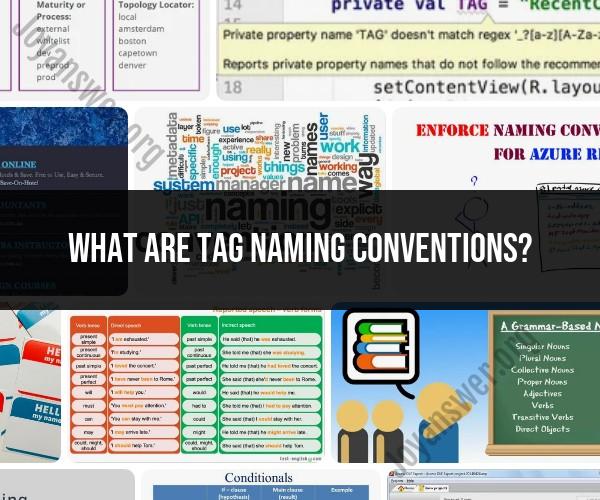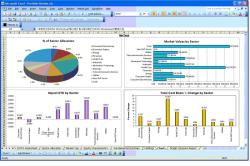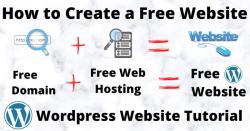What are tag naming conventions?
Tag naming conventions are a set of guidelines and best practices used to standardize the way tags or labels are named and applied to various items within a system, database, or organizational structure. Tags are metadata labels that help categorize and organize information, files, objects, or content, making it easier to search for, retrieve, and manage data. Effective tag naming conventions ensure consistency and clarity in how tags are created and used. Here are some common elements and best practices for tag naming conventions:
Consistency:
- Maintain consistent tag naming practices throughout your system or organization. This consistency simplifies the process of finding and managing tagged items.
Descriptiveness:
- Use descriptive and meaningful names for tags. Make sure that the tag name clearly indicates the content, purpose, or category of the items it's applied to.
Short and Clear:
- Keep tag names concise and to the point. Long and complex tag names can be challenging to work with and may not display well in user interfaces.
Avoid Special Characters:
- Avoid using special characters, spaces, or symbols in tag names, as these can lead to issues with compatibility and readability. Use hyphens, underscores, or camel case if needed for multi-word tags.
Avoid Ambiguity:
- Choose tag names that are unambiguous. Tags should not be easily confused with each other or have multiple interpretations.
Lowercase or Uppercase:
- Decide whether to use lowercase or uppercase letters for tag names and stick to your chosen convention consistently.
Avoid Redundancy:
- Avoid using tag names that duplicate information already present in the content or item being tagged. Tags should add value and provide additional context.
Use Singular or Plural Form:
- Choose whether to use singular or plural form for tag names and apply it consistently. For example, use "project" or "projects," but not a mix of both.
Standardize Abbreviations:
- If abbreviations are commonly used in your domain, establish standardized abbreviations for consistency. Ensure that abbreviations are widely understood.
Hierarchy or Nesting:
- If your system supports tag hierarchies or nesting (e.g., folders and subfolders), consider using structured tag naming conventions to reflect hierarchy and relationships.
Avoid Profanity or Offensive Language:
- Maintain professionalism in tag naming by avoiding profanity, offensive language, or terms that may be considered inappropriate.
Documentation:
- Document your tag naming conventions and make them accessible to all users. This documentation should include guidelines, examples, and explanations for tag usage.
User Training:
- Provide training and guidance to users on how to create and apply tags according to the naming conventions. Encourage adherence to these guidelines.
Regular Review:
- Periodically review and update tag naming conventions as needed to accommodate changes in your organization's processes or data requirements.
Effective tag naming conventions help streamline data management, improve searchability, and enhance the overall organization of information. By following these best practices and tailoring them to your specific needs, you can create a consistent and efficient tagging system within your organization or system.
Tag Naming Conventions: Best Practices for Organization
Tag naming conventions are a set of rules for creating and using tags. They help to ensure that tags are consistent, easy to understand, and searchable.
Here are some best practices for developing tag naming conventions:
- Use descriptive names. Tag names should be descriptive of the content they are associated with. Avoid using generic tags or acronyms.
- Use consistent capitalization and punctuation. Tag names should be capitalized or lowercase consistently. You should also use punctuation consistently, such as using underscores or hyphens to separate words.
- Use a consistent hierarchy. If you are using a hierarchical tag structure, make sure that the hierarchy is consistent across all content.
- Avoid using spaces. Spaces can cause problems with searching and sorting tags. Instead, use underscores or hyphens to separate words.
- Use a limited number of tags. It is important to use a limited number of tags for each piece of content. This will help to make the tags more manageable and searchable.
Establishing Effective Tag Naming Guidelines
When establishing tag naming guidelines, it is important to consider the following:
- The purpose of the tags. What do you want to use the tags for? Are you using them to organize content, track analytics, or something else?
- The audience for the tags. Who will be using the tags? Are they internal users, external users, or both?
- The type of content being tagged. What types of content will be tagged? Will you be tagging documents, images, videos, or something else?
Once you have considered these factors, you can develop a set of tag naming guidelines that are tailored to your specific needs.
Structuring Tags for Consistency and Clarity
When structuring tags, it is important to consider the following:
- Use a hierarchy. A hierarchical tag structure allows you to organize tags into groups and subgroups. This can make it easier to find and manage tags.
- Use descriptive prefixes. Tag prefixes can help to organize tags and make them more descriptive. For example, you could use the prefix "product" for all tags related to products.
- Use namespaces. Namespaces can help to avoid name collisions. For example, if you are using tags for both products and customers, you could use the namespaces "product" and "customer" to distinguish between the two types of tags.
By following these tips, you can create a tag naming structure that is consistent, clear, and easy to use.
Here are some additional tips for structuring tags:
- Use a logical structure. The tag structure should be logical and easy to understand. For example, you could start with a broad category, such as "products," and then subdivide it into more specific categories, such as "electronics" and "clothing."
- Use consistent naming conventions. The tag names should be consistent with the tag structure. For example, if you are using a hierarchical tag structure, the tag names should be hierarchical as well.
- Use a limited number of levels. It is important to use a limited number of levels in your tag structure. This will help to keep the tag structure manageable and easy to navigate.
By following these tips, you can create a tag structure that is effective and efficient.












